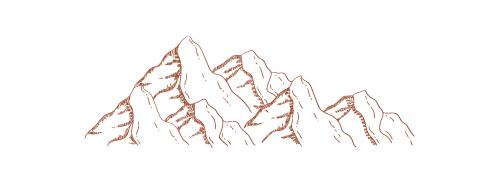Understanding Ulnar Nerve Entrapment
The ulnar nerve is a vital nervous system component that is responsible for transmitting signals between the brain, forearm, and hand. There are a range of uncomfortable symptoms that happen when a person experiences ulnar nerve entrapment. The nerve becomes compressed or irritated, commonly at the elbow, leading to a frustrating time.
Common Causes of Ulnar Nerve Entrapment
- Pressure on the Ulnar Nerve: The leading cause of ulnar nerve entrapment is the nerve experiencing prolonged stress. This can be caused by leaning on the elbow often or resting on a hard surface.
- Repetitive Movements: Engaging in repetitive arm and elbow movements, like playing sports, can potentially contribute to developing ulnar nerve entrapment.
- Anatomy and Structure: A person’s anatomy can make them more prone to experiencing ulnar nerve entrapment.
- Prior Injuries: If you have a history of elbow injuries or fractures, you could also be at risk of experiencing ulnar nerve entrapment.
Diagnosis of Ulnar Nerve Entrapment
Suppose you suspect that you are experiencing symptoms of ulnar nerve entrapment. In that case, you need to seek professional medical advice from a doctor’s office like St. George Hand Surgery before any severe damage can be done. The hand surgeons will conduct a thorough examination and may order a series of diagnostic tests to confirm the suspected condition. They then can create a plan of treatment ulnar nerve entrapment. The sooner you see a doctor, the sooner you can expect to receive treatment.
Non-Surgical Treatment Options
After you have met with a doctor and received a diagnosis, you can begin to discuss the treatment ulnar nerve entrapment. In the majority of cases, you will be able to avoid surgery by trying these non-surgical methods first:
Rest and Activity Modification
The best way to relieve the painful symptoms is to avoid activities that can worsen the issue. You may have to modify your work environment or adjust your daily routine to reduce stress on the ulnar nerve.
Physical Therapy Exercises
You may be prescribed to visit a physical therapist who will have a series of exercises that can improve your strength, improve flexibility in the affected arm, and alleviate nerve compression. These exercises can be an effective way to manage ulnar nerve entrapment.
Medications and Anti-Inflammatory Drugs
Your doctor might also suggest a non-prescription pain reliever as a treatment ulnar nerve entrapment. They are able to manage pain and inflammation associated with the condition.
Use of Splints or Braces
The use of a brace or splint can help keep your elbow in a less compressed position that will allow the ulnar nerve to heal. Your hand surgeon can recommend the most suitable device for your condition.
Lifestyle and Ergonomic Changes
Your doctor may also suggest that you make some simple changes to your life and routine that can make a difference in your condition. They might suggest that you adjust your workspace, avoid prolonged elbow pressure, and maintain proper posture, which can prevent the worsening of symptoms.
Surgical Treatment Options
Surgery may be necessary in cases where non-surgical treatments are ineffective or when the condition is severe. There are several surgical procedures available, such as:
Ulnar Nerve Decompression
By creating more space within the cubital tunnel or removing constricting structures, this surgery can relieve pressure on the ulnar nerve.
Ulnar Nerve Transposition
In cases where the nerve is frequently dislocating or compressing, surgeons may reposition the ulnar nerve to a more protected location.
Nerve Grafts
In the most severe cases with extensive damage to the ulnar nerve, a nerve graft might be necessary to repair the damage.
You may want to try alternative methods to relieve your symptoms. You can try acupuncture for ulnar nerve entrapment or something similar. But make sure to speak with your doctor to find the best treatment ulnar nerve entrapment for you.
Preventing Ulnar Nerve Entrapment
If you are interested in preventing ulnar nerve entrapment, then there are a few things you can do to help avoid treatment ulnar nerve entrapment. You will need to make lifestyle adjustments and be mindful of your arms movements and positions.
Tips for Preventing the Condition
- Avoid leaning on your elbow for extended periods.
- Take regular breaks if your work involves repetitive arm movements.
- Maintain good posture to reduce strain on the elbow.
- Perform regular exercises to strengthen the muscles around the elbow.
When to Seek Medical Help
If you experience persistent pain, numbness, tingling, or weakness in your hand or fingers, especially if it worsens or doesn’t improve with self-care, you must consult a healthcare professional as soon as possible. Early diagnosis and treatment ulnar nerve entrapment can significantly improve the chances of successful recovery.
Ulnar nerve entrapment is a common condition that can be managed with the right approach. If you suspect you may have this condition, please reach out to the doctors at St. George Hand Surgeons so they can help you get back to living a comfortable life.
With the proper care and adjustments, we can help alleviate the discomfort and regain functionality in your arm and hand. Please book your appointment with one of our doctors today so we can start helping you get back to life.

